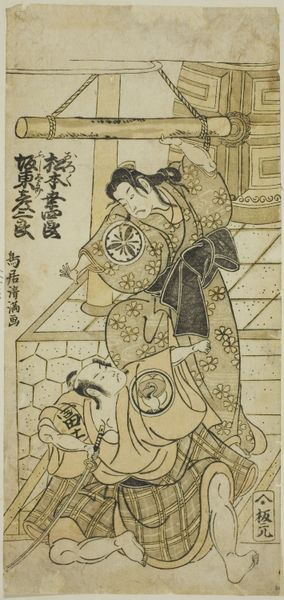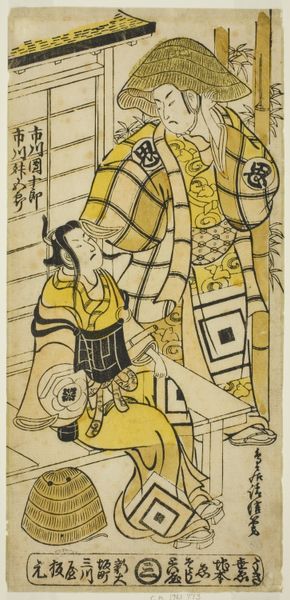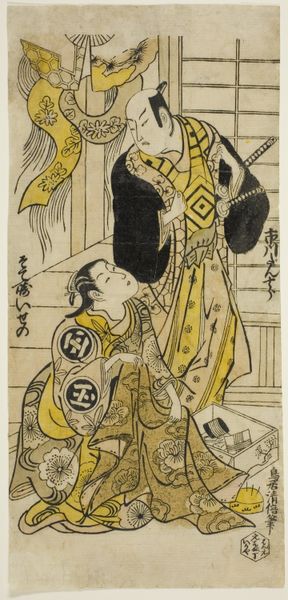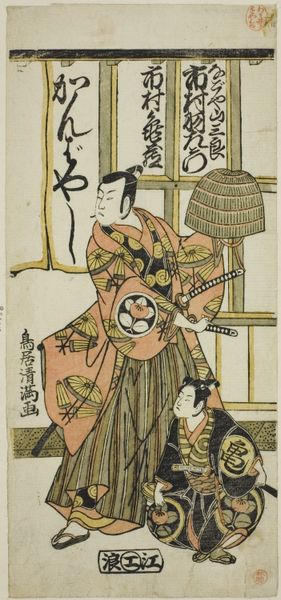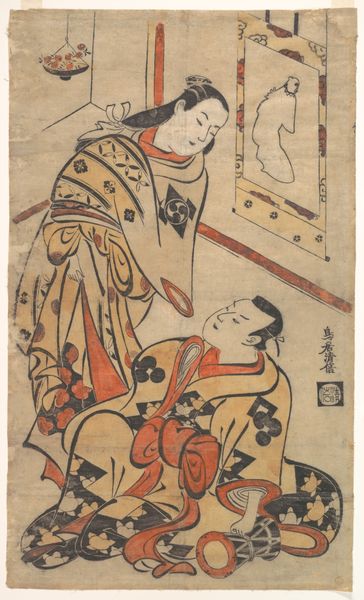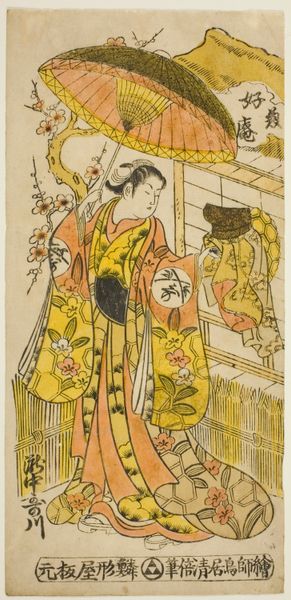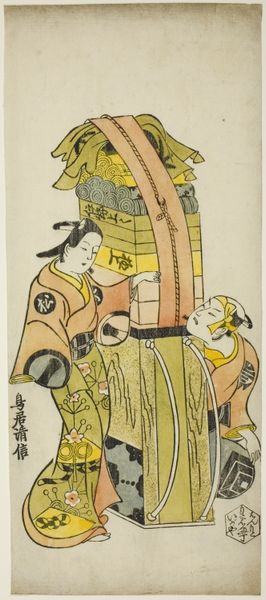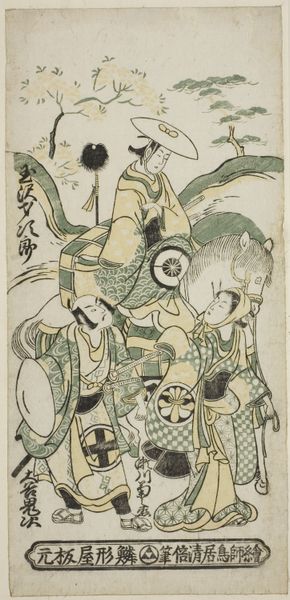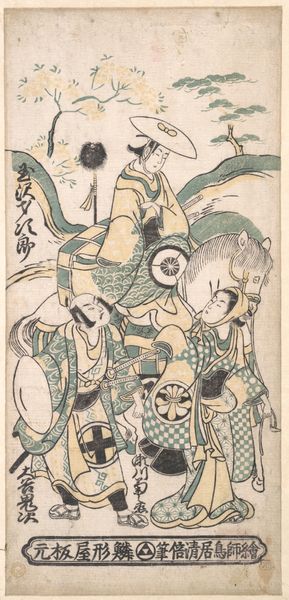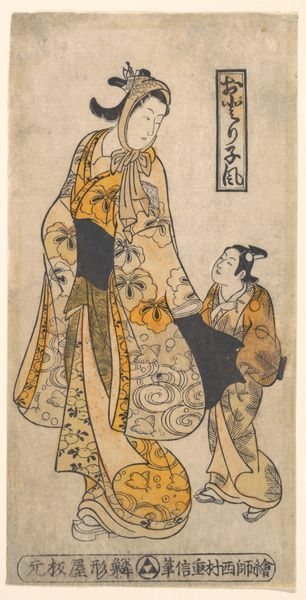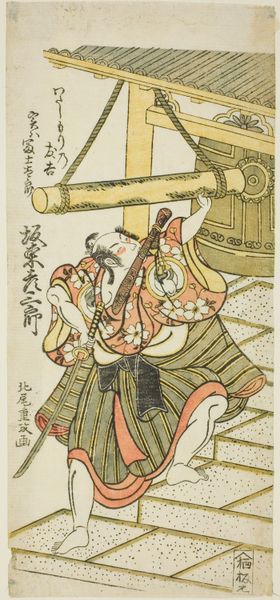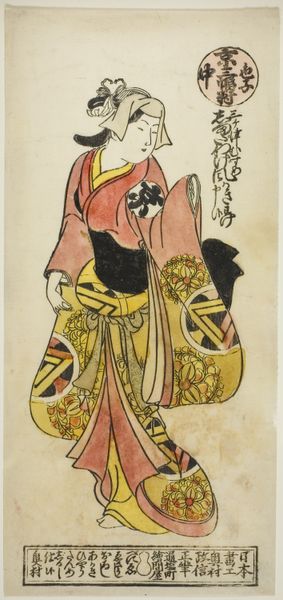
The Actors Kameya Jujiro I as Soga no Juro and Segawa Kikunojo I as Oiso no Tora in the play ”Hatsu Hikage Maizuru Soga," performed at the Nakamura Theater in the first month, 1737 1737
0:00
0:00
print, woodblock-print
#
ink drawing
# print
#
pen sketch
#
asian-art
#
ukiyo-e
#
japan
#
figuration
#
woodblock-print
#
genre-painting
Dimensions: 30.8 × 15.5 cm
Copyright: Public Domain
This 1737 woodblock print by Torii Kiyonobu II captures actors Kameya Jujiro I and Segawa Kikunojo I in a Kabuki play. The print offers a glimpse into the world of Kabuki theater, a vibrant form of entertainment in Edo-period Japan. Kabuki was not just entertainment, it was a social event where fashion, gossip, and the cult of celebrity thrived. Here, the representation of Segawa Kikunojo I is particularly interesting. He was an onnagata, a male actor specializing in female roles. In a society with strict gender roles, onnagata were cultural icons, embodying idealized femininity. The actors are depicted with grace and elegance, but beneath the surface lies a complex interplay of gender, class, and social expectations. Kabuki was immensely popular but also faced censorship from the ruling shogunate, wary of its potential to incite social unrest. This print encapsulates the dynamism of Edo-period culture, where art, theater, and social life were intertwined. It invites us to reflect on the ways in which gender and identity are constructed, performed, and consumed within a specific historical context.
Comments
No comments
Be the first to comment and join the conversation on the ultimate creative platform.
